Istaravhshan
Istaravshan
Istaravshan is a good sized town with the population of 55 000 at the southern part of Fergana Valley and not far from Khujand (80 km), in Northern Tajikistan and the Sughd region and the Turkestan mountain ridge. It used to be called Kir by the Parthians, Cyropol by Alexander the Great and Ura-Tyube by the Russians and Soviets. Istaravshan is a new name as the Soviet name endured until the end of 2000 when it was renamed Istaravshan. Nevertheless, many residents and inhabitants of the neighboring cities still call it Ura Tyube and the inhabitants Uratyubins.
It is believed that the city was founded 2 500 years ago but the exact age of Istaravshan is still not known. In the first two centuries AD, it was an important city with 6 km long walls and later it became a staging point on the Silk Road. While the older history of Istaravshan is not that well known, it is certain that the city promptly developed under the Samanid dynasty in the 9th and 10th centuries. Later, by the 13th century, most cities in the region, it fell under the Genghis Khan who razed it to the ground.
The city climate is pleasant, mild in summer with little rainfall and quite hot and in winter a lot of snow. This small historic town has one of the well-preserved old towns in Tajikistan, inserted with some lovely traditional architecture.
Residents of Istaravshan were for long famous artisans whose craftsmanship was nearly impossible to beat. Most of the residents were engaged in the manufacture of shoes, dishes, fabrics and knives, which were decorated with carvings. In Central Asia, these products were evaluated at the highest level. Today the city is the most important wholesale trade center in the area. Modern Istaravshan is still famous for its crafts industry and the development of enterprises that are engaged in fruit processing and wine production. Istaravshan is currently not very often included in our Tajikistan Tours or Central Asia Tours but we are glad to include it if you wish to visit it during our tours.
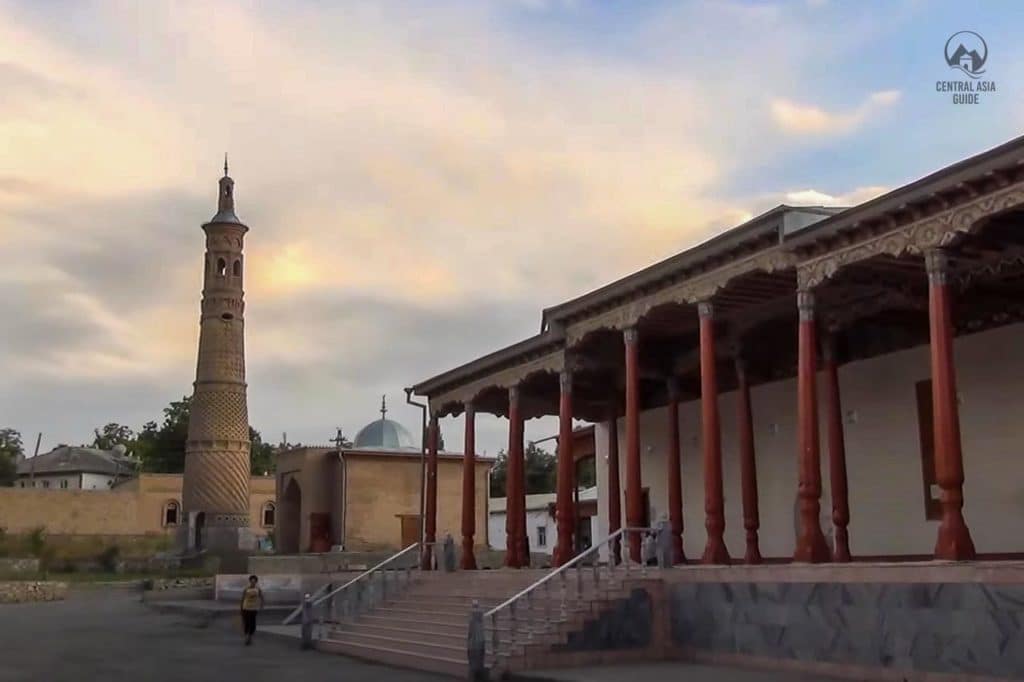

Istaravshan Sights
Istaravshan is considered an open-air museum. In 2002 she was celebrated 2500 years from the moment of its foundation. Furthermore, the city is believed to be one of the most ancient settlements in Central Asia. Istaravshan has managed to preserve some of the unique architecture and historical monuments of Tajikistan. From the early days, the city has seen an active player in crafts and trade which can be still seen in the lively bazar which is famed for the handicrafts produced and sold here.
Mug Teppe Fort
Mug Teppe (Kalai Mug) walls can be seen from the main road passing through Istaravshan on top of a high hill. It is an old citadel that used to be the residence of the Mug government, it lies on the hill overlooking the city. This site of the Sogdian fortress was stormed by Alexander the Great in 329 BC. The grand entry gate was constructed in 2002 for the Istaravshan’s 2500th-anniversary celebrations and a bit later the whole site was surrounded by high walls. This new restoration dominates the site though it’s unlikely to be historically specific in its design and even the local archaeologists are not happy with the results.
Inside the fortress there are several archaeological dig sites and a restored Zoroastrian temple with an underground ancient ossuary with burnt bones next to it. The inside of the fort is unfortunately dominated by a large newly built white amphitheater that has surely destroyed largely the historical value of the center of the fortress area. Otherwise the insides of the fortress have been turned into a garden. It is possible to walk around the fortress on top of the walls that offers some nice views over the city and the whole valley.
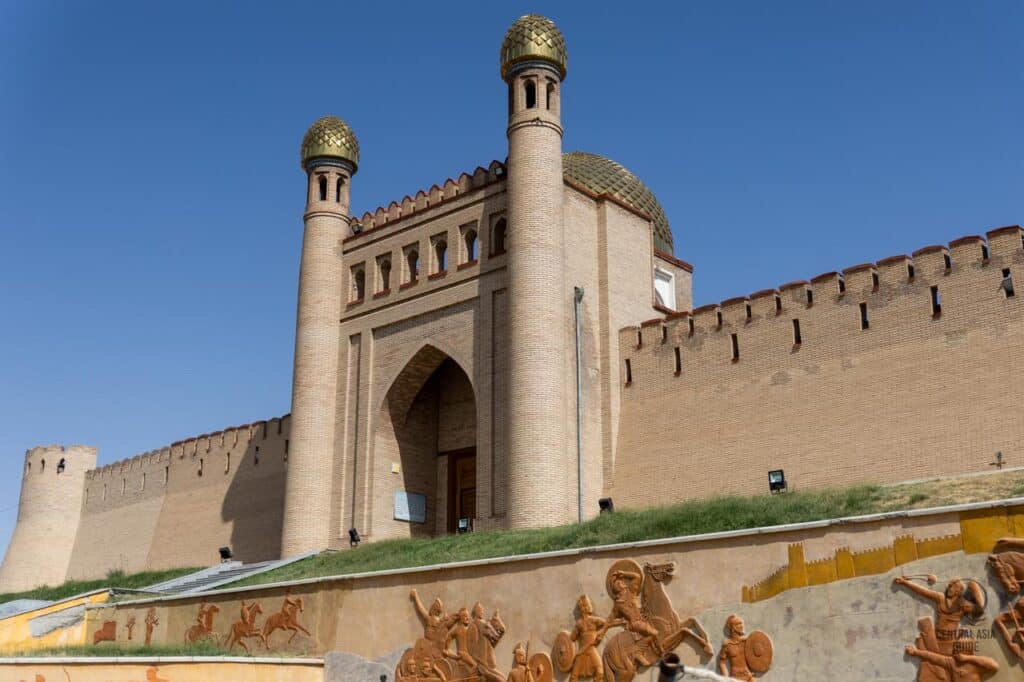
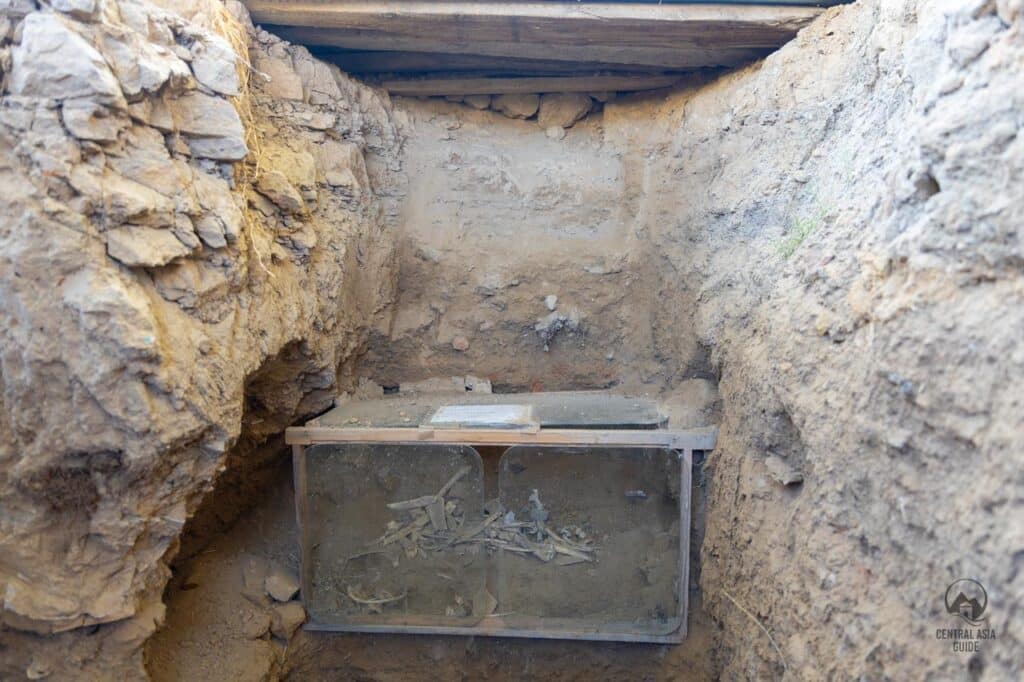
Shahri Kohna Istaravshan Old Town
The old town name Shahri Kohna preserves much of its appearance with narrow streets within mud-brick houses. It is an impressive maze of alleys west of the main drag, the Lenin street, that links the bus station and bazaar. To get there, first, find the Timurid minaret (the tallest structure in the area), then simply walk into the streets and start exploring. Alleys soon disappear into the old town from the Hazrat-i-Shah Mosque and Mausoleum (Lenin 98), the town’s main Friday mosque.
Sary Mazar
Sari Mazar (Sar-i Mazor) a complex consist of three structures that of two date back to more than 500 years as there are two mausoleums from the 15th and 16th centuries. The first mausoleum is the Ajina Khona, which means the house of demons and an unusual name for a holy building named by the Soviet’s to scare away children from playing there. It is austere within, but the exterior has some intricate brickwork. The second mausoleum is Hazraji Mekhdoni Azam and his family. He was a nephew of Mir Saheed Hamadoni, whose mausoleum is in Kulob. It is plain within, although there are traces of Arabic and Farsi script on the walls. Outside of the mausoleum is ornate with fine stonework and tiling. His tomb is there, with those of his wife, son and nephew. He was born in Khorezm, in modern Uzbekistan and was reputed for having died while preaching, proving his closeness to God.
The third old building is the Sar-i Mazor mosque, built in the 16th and 17th centuries, and has had some recent renovations. The four tin cupolas of the Mazar-i-Chor Gumbaz conceal Tajikistan’s most impressive painted ceilings. There is also a modern mosque, which can accommodate over a thousand worshippers. The money for the construction was all raised locally. The whole complex is set in splendidly maintained grounds, with some ancient trees considered being at least 800 years old.
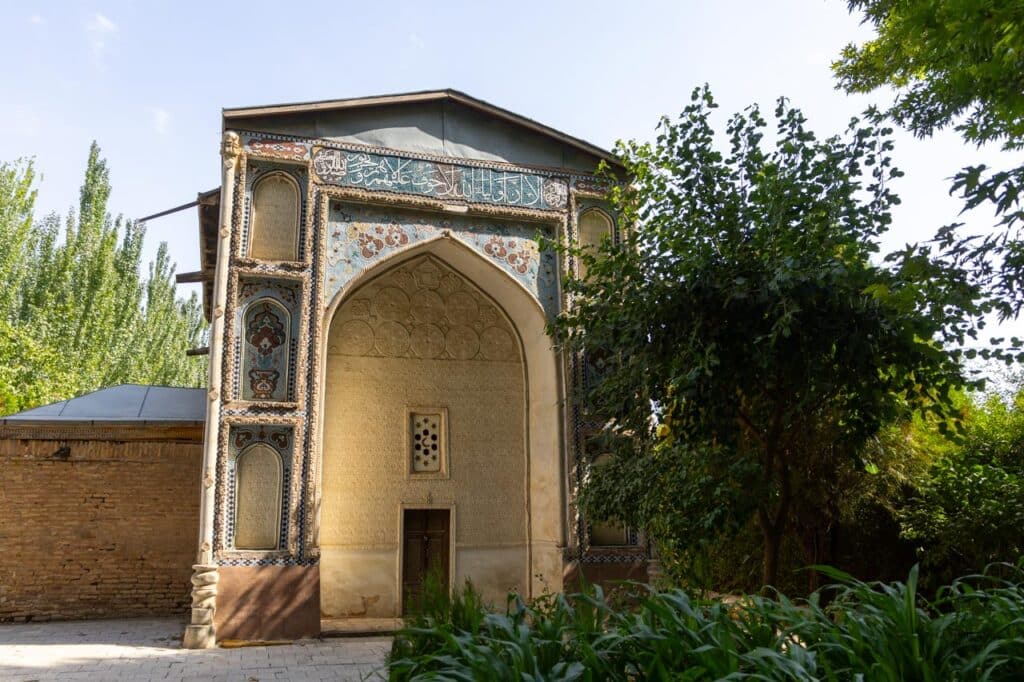
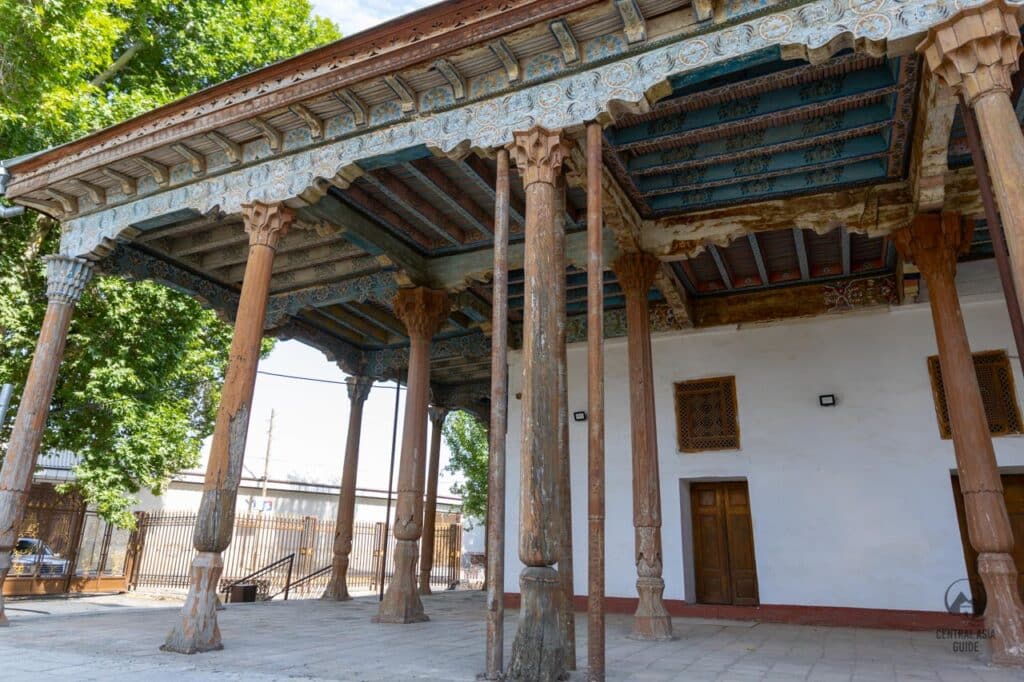
Hazrat-i Shoh Mosque
The Hazrat-i-Shoh is a mosque and the mausoleum next to it contains the tomb of the brothers of Kusam ibn Abbas. Kusam was the cousin of the Prophet Mohammed, he is presumably buried in Samarkand’s Shah-i Zinda. The structure is impressive with its modest brick building, though the ceilings are excellently painted. Although the mausoleum was originally built in the 11th century, today the structure dates back to the 18th century. In the gardens are the analogies of great Tajik figures on a wall, poets on the left, writers on the right.
Furthermore there are two other mosques that belongs to 19th century. Chahor Gumbaz or Four Domes: A tiny 19th-century four domes and a central pillar mosque. It lies next to a holy pool, shaded by an ancient tree. Havzi Sangin: The modern splendidly built mosque has a shrine with a holy pool. Near the Kuk Gumbaz.
Kok Gumbaz (Blue Dome) Madrassa
Eye-catching turquoise Timurid Kok-Gumbaz (Blue Dome) is perhaps the most photogenic sight standing in the old town. It lies next to the 19th-century Hauz-i-Sangin Mosque, with its fine ceiling paintings, dried small pool and tomb of Shah Fuzail ibn-Abbas. Kok Gumbaz dates from the 1600s and was built by Abdul Latif Sultan, son of Ulugh Bek, the architect of Samarkand’s exceptional medieval observatory. Ulugh Bek was a “Renaissance” humanist, who has been compared to Galileo. His son was more conservative, and so enraged by his illustrious father’s radical views is thought to have thrown him from the roof of the Observatory.
Abdul Latif certainly left a beautiful memorial to himself in the Kuk Gumbaz. The building has turquoise tile work and stands in an enclosed courtyard with the classrooms. During the Soviet times, the madrassa but today it opened again and there are 100 students undertaking a religious education. Although not all proceed on to become mullahs. Additional to theology, the students study Arabic, Russian, English and computer studies. The professors and pupils are welcoming and visitors can go inside, students are keen to practice their English with the tourists.
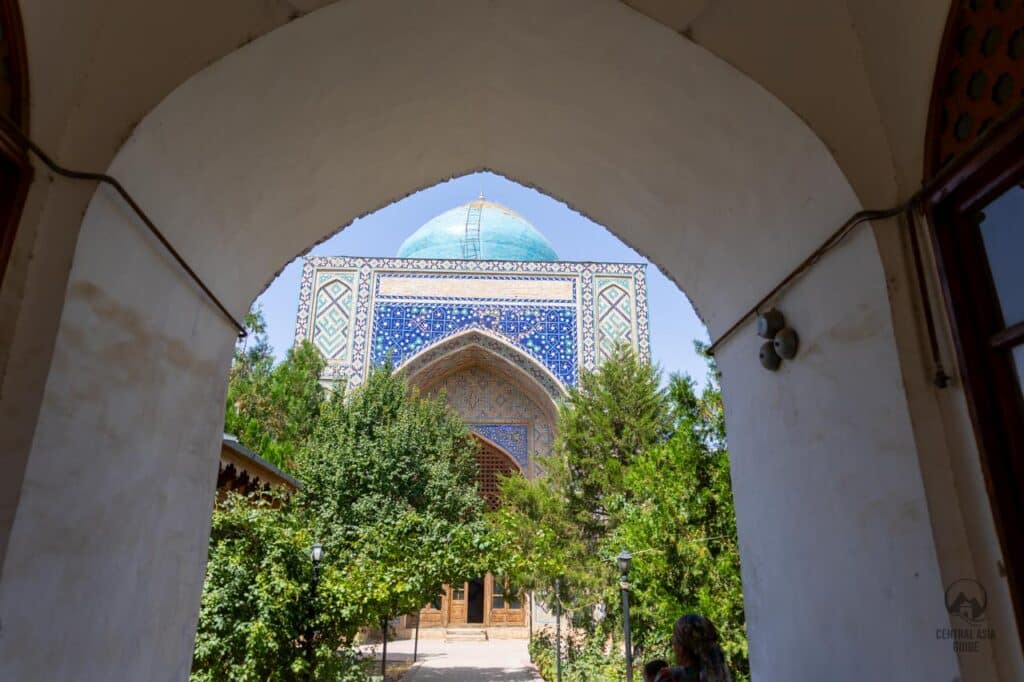
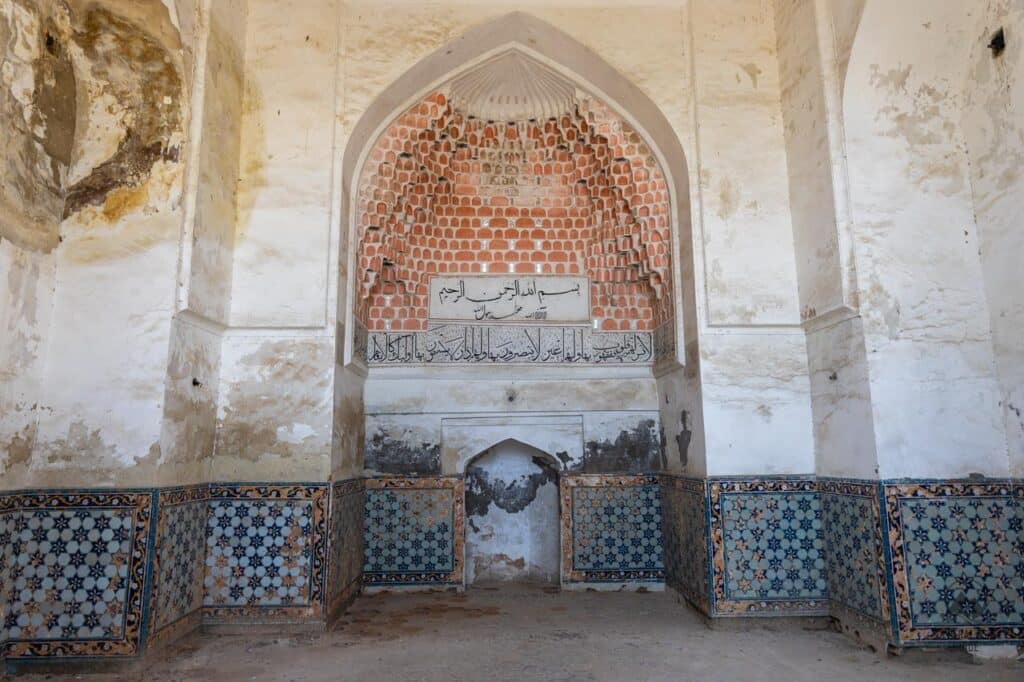
Istaravshan Crafts
Istaravshan has always had a tradition of craftsmanship, particularly in metalwork, ceramics and woodcarving. Today you can still see some of that on exhibit in the metal workshops around the bazaar where men are forging knives, agricultural tools. In front of the bazaar, you can find a line of blacksmiths in small workshops, with traditional bellows, making and repairing all sorts of metal items. Some of them maintain the famous local tradition of knife making, which goes back 2,000 years. They will make presentational knives from a wide variety of designs to your choice. Most of the craftsmen are happy just for you to enter their premises to watch them work and, certainly, even happier if you purchase their product.
Istaravshan History Museum
History museum exhibits some samples of the different crafts, traditional dress as well as a collection of the 10th-century ossuaries intended to store the bones of the deceased in the Zoroastrian tradition. The museum occupies the building of a former Orthodox church, built-in 1865-1867. It was one of the first brick buildings in the city, along with the governor’s house, school and a number of administrative buildings, all of them are well preserved and serve as an adornment of one of the central parts of the city, which many residents continue to call the “Russian quarter”.
Istaravshan Bazaar
Istaravshan’s colorful central bazaar is one of the biggest in the region and worth a visit site, particularly on Tuesday. Located beyond the river, the four-storey yellow building marks the center of the bazaar. Amongst the shashlik stands and fruit stalls are a few interesting buildings, including the crumbling remains of what was once a domed, tiled chaikhana and, on the opposite side of the street, a newer building composed in a traditional style and complete with ornately carved pillars and fascia boards.
Travel to Istaravshan
The distance between Dushanbe and Istaravshan is 268km. There is also a good condition road between Istaravshan and Khujand, and the 70 km journey takes just an hour by car. Most of the land around Istaravshan is planted with cotton, fruit trees and watermelons with sites having enough water. Like in Soviet time, there are still students forced to spend a semester picking cotton during the autumn time without pay, receiving just their very basic board and lodging. The product from here is exported as far as Russia in refrigerated trucks.
Istaravshan’s main bus stand is on Lenin street at the outskirts of the town and it is the place to be if you head towards Khujand or Dushanbe. The intercity minibusses stop here, as do the numerous local minibuses.
Around Istaravshan
Giant Lenin Bust
The large bust of Lenin stands outside of Istaravshan on the road to Khujand, nearby the Obanbori Dahanasoy Reservoir. You can still climb up the more than 300 stairs leading to the hill and have your picture taken with the glorious dictator’s bust or the reservoir behind it.
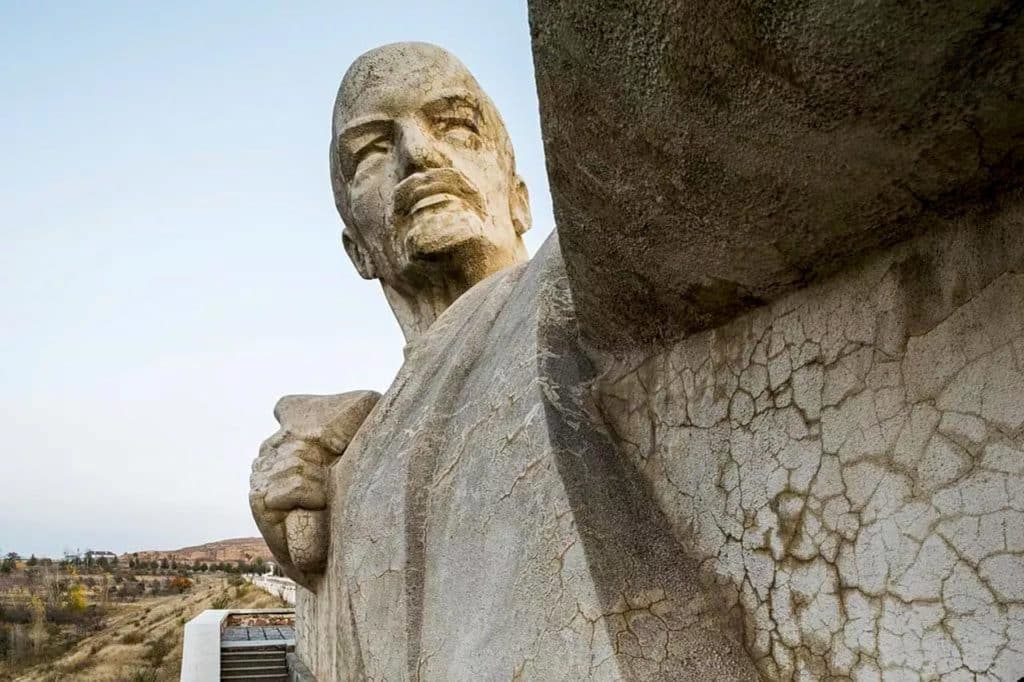
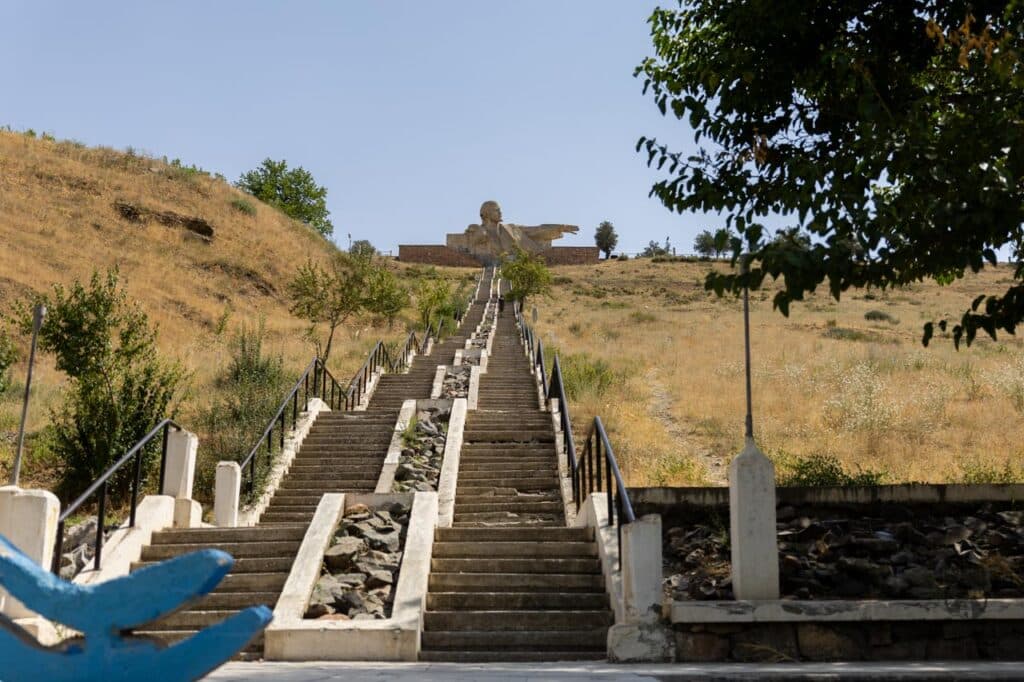

Bunjikat city ruins
Bunjikat (Kahkaha) ruins are located just west of the current Shakhristan town, on the western side of the river cutting the city in half, at the pass leading to Fann mountains from Fergana valley, southwest from Istaravshan. Archaeologist have found here structures with palace and cult buildings decorated with paintings and carved panels. A painting was found here depicting a she-wolf feeding two infants – evidence of contacts between the West and the East (Rome connection).
Bunjikat was the former capital city of the Principality of Ushrusana between the 6th and 9th Centuries AD and it replaced the older capital of Kurukada. From the 5th to the 7th century AD, Ustushana was part of the territory of the Hephthalites, followed by the Western Turks after 560 CE. The Principality probably retained a certain level of autonomy throughout this period, and was ruled directly by the afshins of the Kavus dynasty. Bunjikat maintained its sovereignty until 893 AD.
The Bunjikat site is not really excavated and there is no information or any museums available but the site is free to be roamed and some remains of houses, bazar and other buildings can be seen. Further to the south, there are also the ruins of the Chichura with a fortress and remains of a city and citadel.
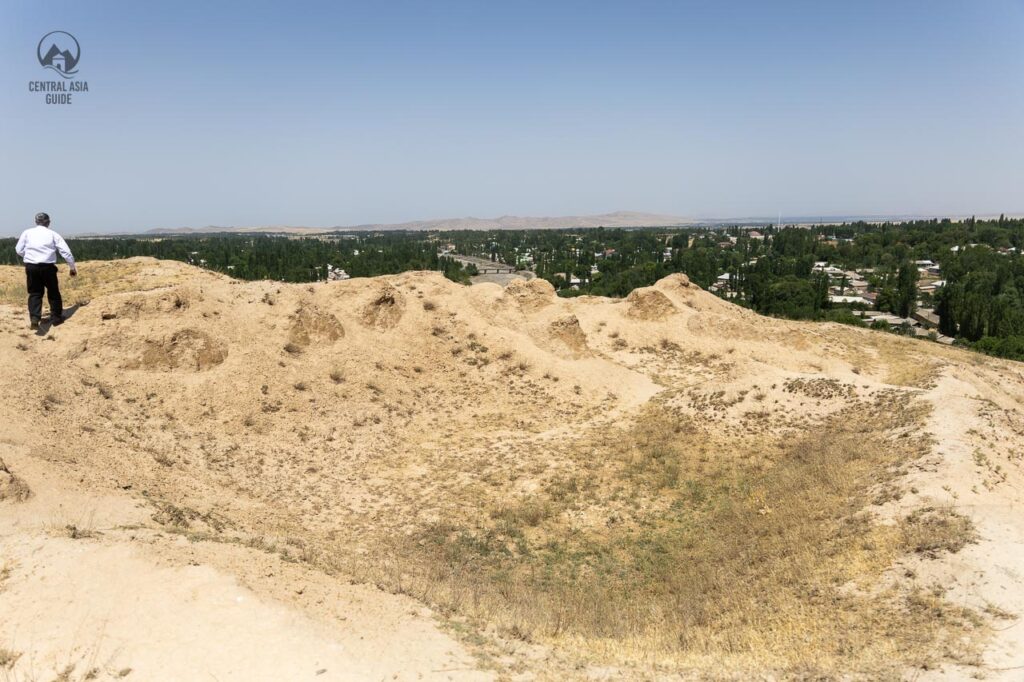
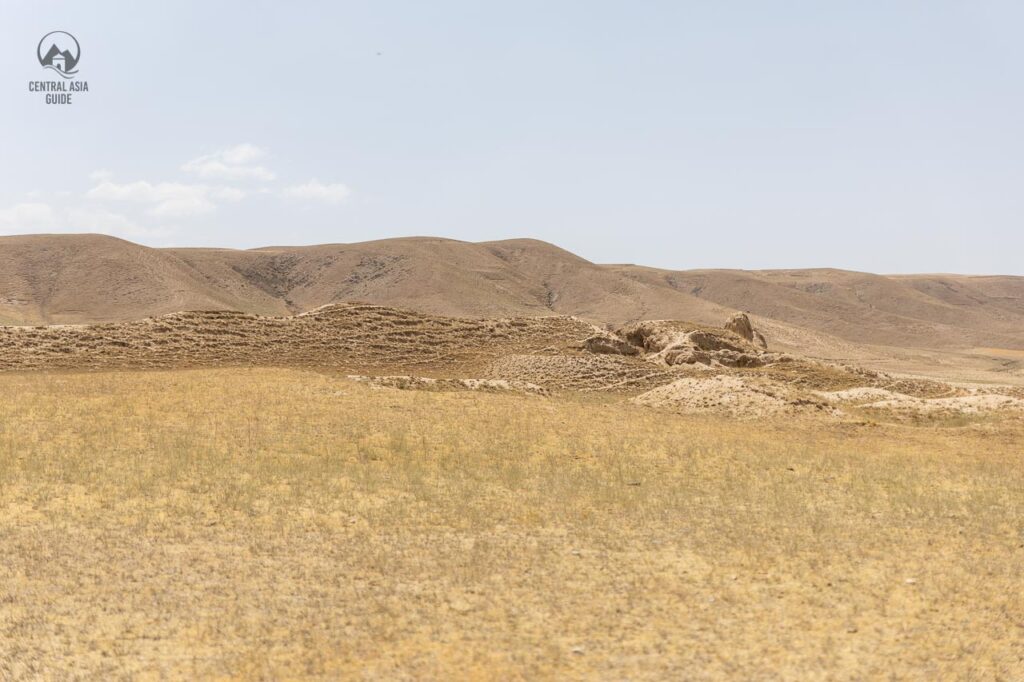
Other sights near Istaravshan
Page updated 16.9.2023